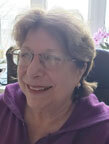The History of Health at Every Size®: Chapter 3: The 1970s
by Barbara Altman Bruno, Ph.D., DCSW. Previously posted on the Health At Every Size® Blog and reposted here with author permission.
The 1970s saw the building of feminism, iconoclasm, introspection, a peace movement regarding Vietnam, and mounting pressure on women to be thinner.
Using a dormitory at Green Mountain College in Vermont, Thelma Wayler, RD, began a weight management program based not on dieting, but on making choices, eating well, moving one’s body, and thinking positively. The spa, Green Mountain at Fox Run, began in 1973. Wayler trademarked the phrase, “You’re going to like you.”
Canada’s ParticipACTION in 1971 aimed to raise awareness of the health implications of inactivity, comparing 30-year-old Canadians unfavorably with 60-year-old Swedes. (ParticipACTION would be contracted by Health Canada in 1991 to develop the Vitality/Vitalité name, logo, and media campaign. Plagued by lack of funding, it resorted to accepting funds for “obesity education programs” from drug companies such as Hoffman La Roche [producer of Xenical], and subsequently closed.)(1)
The social construction of weight concerns was examined in different ways by New York- and London-based psychotherapist Susie Orbach, a group of women in Los Angeles, and a medical anthropologist in the San Francisco Bay area.
For Orbach, white, middle-class women’s eating problems were the result of their subordinate status in society. These “compulsive eaters” would get caught up in a repeated diet/binge cycle, which Orbach attributed to their ambivalence. She explored these ideas in Fat Is a Feminist Issue. She and Carol Munter recommended stopping dieting and instead listening to one’s own hunger/fullness cues, as well as learning to use one’s own voice (rather than the body) to express difficult feelings and ideas.
Fat feminists Vivian Mayer (also called Aldebaran) and Judy Freespirit, women in the Los Angeles chapter of NAAFA, presented the following to the women of the Los Angeles radical therapy collective:
Biology, not eating habits, is the main cause of fat.
Health problems of fat people are not inherently due to fat, but the result of stress, self-hatred, and chronic dieting.
Weight loss efforts damage health, almost never “succeed” except temporarily, and should not be used.
Food binges are a natural response to chronic dieting.
The role of a radical therapist is to help fat women feel good about themselves as fat women and stop trying to lose weight. To accomplish this, radical therapists should learn and teach accurate information about fat women’s health and nutrition. They should provide emotional support for women on binges to continue eating and stop feeling guilty.(2)
Aldebaran subsequently published two articles about psychology, health, and fatness in radical therapy journals. The Fat Underground formed and included, among others, Lynn Mabel-Lois (subsequently called Lynn McAfee). They published a brochure, “Before You Go on a Diet, Read This.” They were validated by sociologist Natalie Allon and by psychologists Susan and O. Wayne Wooley, who published research incorporating fat feminist writings in professional journals. Another academic, medical anthropologist Margaret MacKenzie, noted that in societies where larger women were accepted, such as Samoa, their blood pressure was normal.
1 Gingras, J. R. (2006). Throwing their weight around: Canadians take on health at every size. Health at Every Size Journal, 19(4), 195-206.
2 Shadow on a Tightrope. San Francisco: Spinsters/Aunt Lute Book Company, 1983.
Join the NAAFA mailing list for a monthly peek at historic fat activism.
Barbara Altman Bruno, Ph.D., LCSW, is a clinical social worker, size acceptance activist, and HAES pioneer. She has presented at clinical conferences, appeared in television, radio, magazines, newspapers, and demonstrations, and has written many articles, including well-being columns for larger people, guidelines for therapists who treat fat clients, a brief history of HAES, and a book, Worth Your Weight (what you CAN do about a weight problem). She is former co-chair of education for the Association for Size Diversity and Health (ASDAH) and is on NAAFA’s Advisory Board.


